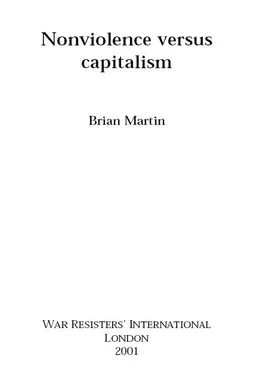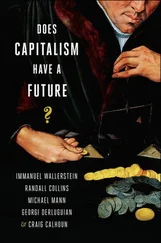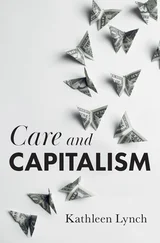Campaigns and small individual actions reinforce each other. Campaigns make issues visible, giving encouragement for individual action. Small actions provide a supportive climate for campaigning. In short, campaigning and cultural change go hand in hand. It is easier to observe and analyse campaigns. Perhaps it would be valuable to study and consciously use some of the small ways of acting.
* * *
No one knows for sure how to go about replacing capitalism with a better system. There are many possible ways to proceed, and not enough assessment of what works and what doesn’t. It is almost certain to be a very long-term process. Therefore it makes a lot of sense to learn as much as possible about how best to go about it. There is a need for experimentation, innovation and evaluation. There is a lot to be done. With participatory approaches, there should be a lot of people to do it.
Naomi Klein, No Logo (New York: Picador, 1999), gives an insightful survey of recent popular challenges to corporate power.
Gene Sharp, The Politics of Nonviolent Action [ (Boston: Porter Sargent, 1973), pp. 7-62. Sharp’s ideas are discussed in more detail in chapter 2.
Erik Dammann, Revolution in the Affluent Society (London: Heretic Books, 1984); Dave Dellinger, Revolutionary Nonviolence: Essays (Garden City, NY: Doubleday, 1971); George Lakey, Strategy for a Living Revolution (New York: Grossman, 1973); Brian Martin, Social Defence, Social Change (London: Freedom Press, 1993); Martin Oppenheimer, The Urban Guerilla (Chicago: Quadrangle, 1969); Geoffrey Ostergaard, Nonviolent Revolution in India (New Delhi: Gandhi Peace Foundation, 1985).
The title of a new glossy magazine is Revolution: Business and Marketing in the Digital Economy. A billboard — an ad for Adobe — shows several men in suits with their neckties ablaze, with the web site address www.smashthestatusquo.com. Then there is the Apple Computer ad showing Gandhi and his spinning wheel, with the Apple slogan “Think different,” flying in the fact of the fact that Gandhi was a trenchant critic of both capitalism and much modern technology.
Brian Martin, Technology for Nonviolent Struggle (London: War Resisters’ International, 2001).
This view is developed in Brian Martin, “On the value of simple ideas,” Information Liberation (London: Freedom Press, 1998), pp. 143-163.
For case studies, see Robert Cooney and Helen Michalowski (eds.), The Power of the People: Active Nonviolence in the United States (Philadelphia: New Society Press, 1987); Ralph E. Crow, Philip Grant and Saad E. Ibrahim (eds.), Arab Nonviolent Political Struggle in the Middle East (Boulder: Lynne Rienner, 1990); Souad R. Dajani, Eyes Without Country: Searching for a Palestinian Strategy of Liberation (Philadelphia: Temple University Press, 1994); Pam McAllister, The River of Courage: Generations of Women’s Resistance and Action (Philadelphia: New Society Press, 1991); Philip McManus and Gerald Schlabach (eds.), Relentless Persistence: Nonviolent Action in Latin America (Philadelphia: New Society Press, 1991); Andrew Rigby, Living the Intifada (London: Zed Books, 1991); Dick Scott, Ask That Mountain: The Story of Parihaka (Auckland: Heinemann Educational Books/Southern Cross Books, 1975); Stephen Zunes, “The role of non-violent action in the downfall of apartheid,” Journal of Modern African Studies, Vol. 37, No. 1, 1999, pp. 137-169.
Thomas Weber, On the Salt March: The Historiography of Gandhi’s March to Dandi (New Delhi: HarperCollins, 1997). On Gandhi’s approach to nonviolence more generally, see Mohandas K. Gandhi, An Autobiography or the Story of My Experiments with Truth (Ahmedabad: Navajivan, 1927); Richard B. Gregg, The Power of Nonviolence (New York: Schocken Books, [1935] 1966); Krishnalal Shridharani, War Without Violence: A Study of Gandhi’s Method and its Accomplishments (London: Victor Gollancz, 1939).
On the practicalities of nonviolent action, see Howard Clark, Sheryl Crown, Angela McKee and Hugh MacPherson, Preparing for Nonviolent Direct Action (Nottingham: Peace News/CND, 1984); Virginia Coover, Ellen Deacon, Charles Esser and Christopher Moore, Resource Manual for a Living Revolution (Philadelphia: New Society Publishers, 1981); Narayan Desai, Handbook for Satyagraphis: A Manual for Volunteers of Total Revolution (New Delhi: Gandhi Peace Foundation; Philadelphia: Movement for a New Society, 1980); Per Herngren, Path of Resistance: The Practice of Civil Disobedience (Philadelphia: New Society Publishers, 1993); Martin Jelfs, Manual for Action (London: Action Resources Group, 1982).
Taylor Branch, Parting the Waters: America in the King Years, 1954-1963 (New York: Simon and Schuster, 1988); David Halberstam, The Children (New York: Random House, 1998); Coretta Scott King, My Life with Martin Luther King, Jr. (New York: Holt, Rinehart and Winston, 1969).
Terminology has changed. “Negro” was the accepted term at the beginning of the civil rights movement, “black” became standard in the 1960s and more recently “African-American” has been used.
D. J. Goodspeed, The Conspirators: A Study of the Coup d’État (London: Macmillan, 1962).
Adam Roberts, “Civil resistance to military coups,” Journal of Peace Research , Vol. 12, 1975, pp. 19-36.
Patricia Parkman, Insurrectionary Civic Strikes in Latin America 1931-1961 (Cambridge, MA: Albert Einstein Institution, 1990); Stephen Zunes, “Unarmed insurrections against authoritarian governments in the Third World: a new kind of revolution,” Third World Quarterly, Vol. 15, No. 3, 1994, pp. 403-426.
Patricia Parkman, Nonviolent Insurrection in El Salvador: The Fall of Maximiliano Hernández Martínez (Tucson: University of Arizona Press, 1988).
H. Gordon Skilling, Czechoslovakia’s Interrupted Revolution (Princeton, NJ: Princeton University Press, 1976); Philip Windson and Adam Roberts, Czechoslovakia 1968: Reform, Repression and Resistance (London: Chatto and Windus, 1969).
David H. Albert (ed.), Tell the American People: Perspectives on the Iranian Revolution (Philadelphia: Movement for a New Society, 1980); Fereydoun Hoveyda, The Fall of the Shah (London: Weidenfeld and Nicolson, 1980).
Gene Sharp, The Politics of Nonviolent Action (Boston: Porter Sargent, 1973), p. 64.
Sharp, p. 240.
This point is made forcefully by Gene Keyes, “Heavy casualties and nonviolent defense,” Philosophy and Social Action , Vol. 17, Nos. 3-4, July-December 1991, pp. 75-88.
This section is adapted from Brian Martin, “Social defence: arguments and actions,” in Shelley Anderson and Janet Larmore (eds.), Nonviolent Struggle and Social Defence (London: War Resisters’ International, 1991), pp. 81-141, at pp. 99-107.
Читать дальше

![Brian Jacques - Martin the Warrior [Redwall 6]](/books/128385/brian-jacques-martin-the-warrior-redwall-6-thumb.webp)










